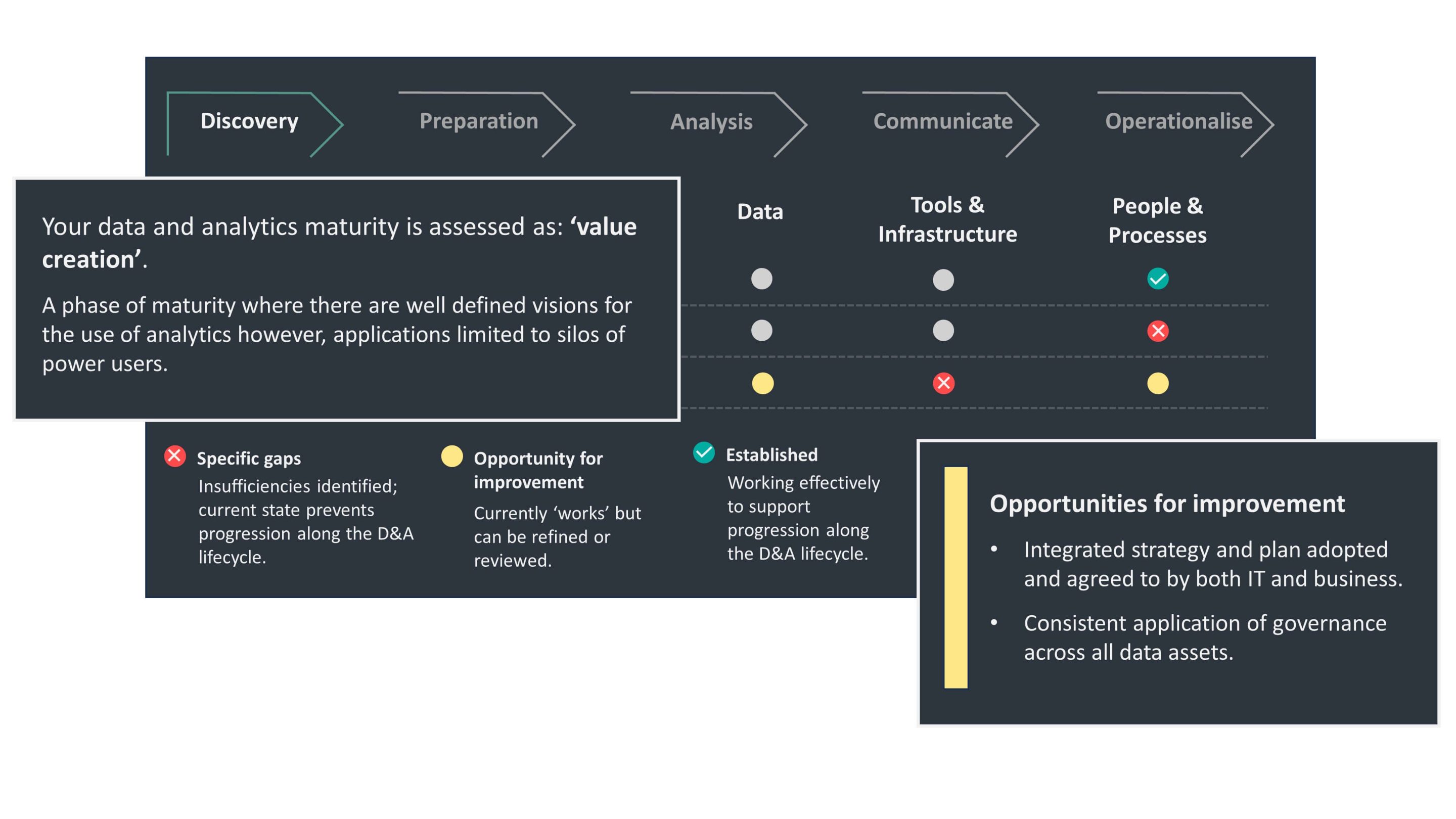What We Do.
Data and Analytics Maturity Scorecard.
Building Your Data Momentum.
Maturing an organisations’ data and analytics capabilities is a journey – however, as data explodes in size and complexity, it can be challenging to charter a path forward. Our maturity scorecard provides a comprehensive approach to help clients unpick their requirements and align investments toward maximising the value out of data and analytics.
What Is The Data And Analytics Maturity Scorecard?
A23’s Data and Analytics Maturity Scorecard assesses five capabilities across the analytics lifecycle.
Capabilities are assessed through four key cornerstones:
1. Strategy & Plan
Explores an organisation’s ability to understand and communicate the value generated from data and analytics for their business.
2. Data
Evaluates an organisations’s awareness of their data landscape – what data is available, its lineage and the relevance of such data to business.
3. Tools and Infrastructure
Assesses the relevance of an organisation’s technology platform to support the delivery of their data and analytics agenda.
4. People & Processes
Looks at whether an organisation has the proper expertise to promote a balance of innovations and governance.
What to expect?
Holistic Approach
An “outside-in” assessment based on interviews of your experts to provide a picture of how digital investment can position your people to execute on your data and analytics vision.
Rapid Development
With processes built for speed and agility – the maturity scorecard assessment can be conducted with minimal time and effort investment from organisations.
An output To Take Forward
A personalised report to help with assessing your organsiation’s progress toward maturing its data and analytics maturity.
How can you start using the data maturity scorecard?
We bring deep expertise across IT infrastructure, data and analytics, and Public Sector acumen when working with you to produce a maturity assessment that can help with:
- Prioritising investment. Establishes a baseline of current-state maturity to identify areas of greatest need to inform investment based on future-state visions.
- Promoting transparency. Documented evidence base that contributes toward the decision-making process.
- Communicating shared objectives. Provides a common starting point to facilitate conversations with stakeholders.

